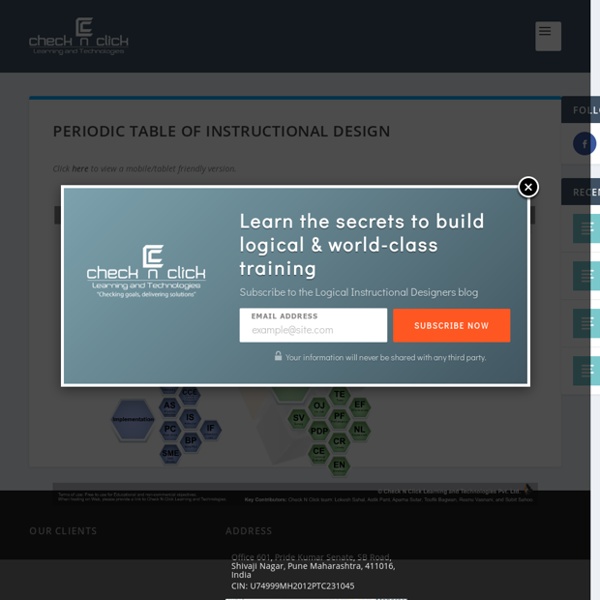



Five Pedagogical Practices to Improve Your Online Course Written by: Rob KellyPublished On: February 8, 2014 Because online courses have fewer opportunities for the spontaneous, real-time exchanges of the face-to-face classroom, online instruction requires a deliberate approach to design and facilitation. As Bethany Simunich says, “Online, learning doesn’t happen by chance.” 1. Using a backward design approach, Simunich has instructors consider what types of activities will enable students to demonstrate that they have achieved the course’s learning outcomes. Depending on those outcomes, the best approach might be an individual assignment or one that involves collaboration in small or large groups. 2. The instructor needs to design the discussion to give students a way to enter the conversation. What is the purpose of this discussion? Dividing students into small groups can help students get involved in the discussion. 3. Where are you now in your understanding of this concept versus where you were at the beginning of the course? 4. 5.
commoncore.fcoe.org/sites/commoncore.fcoe.org/files/resources/FCOE_TechSkills_Flowchart_2012.pdf Performance & Learning Objectives In the analysis phase, the backwards planning model was used to discover what needs to be trained to reach the performance requirements of a business. The information that was collected is now used design the learning platform. And as noted in the Introduction to Design, the starting point is normally the performance or learning objectives: Learning and performance objectives are created so that we know exactly what the learners must be able to do once they have completed the training process. The instructors to know what needs to be taught The learners know what they are supposed to learn The managers know what they are investing their training dollars in. Learning objectives form the basis for what is to be learned, how well it is to be performed, and under what conditions it is to be performed. A Terminal or Performance Objective is developed for each of the tasks selected in the learning program. The Three Parts of an Objective Observable Action (task) Conditions of performance
New Media Literacies — Learning in a Participatory Culture Using the TPACK Image | TPACK.org The TPACK Image (rights free). Read below to learn how to use the image in your own works. Right click to download the high-resolution version of this image. Using the image in your own works Others are free to use the image in non-profit and for-profit works under the following conditions. The source of the image is attributed as author of the work does not make any claim to copyright over the imageThe publisher of the work does not make any claim to copyright over the imageThe image is captioned or credited as “Reproduced by permission of the publisher, © 2012 by tpack.org” (or something equivalent) If those conditions are met, there is no need to contact tpack.org, Matthew Koehler, or Punya Mishra.
Articulate Storyline Unchained – Triggers, Variables and Conditions Published on July 19, 2013, 3:47 pm Written by Ben Saunders Share inShare10 I think we all agree, when developing eLearning for today’s widely diverse user groups, one of the key challenges is to make that content dynamic, engaging and full of user driven interactions. Without this the content comes across as tedious and dull and what’s worse, the message and key learning’s can be lost in a mire of text and static imagery. Elearning developers who have already discovered the power of development tools on the market, will be aware these tools are increasingly gaining acceptance as the preferred development method. B Online Learning use Articulate Storyline development tool to create the next level of user focused, engaging content for our clients and in this blog I would like to outline three of the key concepts Storyline uses to create this type of content in a very developer friendly way. TriggersVariablesConditions Let’s look a simple example. Click to view
Mobile Teaching Versus Mobile Learning (EDUCAUSE Quarterly) Key Takeaways Higher education historically has focused on instructors teaching rather than students learning, an ineffective approach that could seriously hamper the promise of mobile learning. Successful student learning emerges from active engagement, connection to the students' prior knowledge, and simulation of real world experiences — all facilitated by engaging learners' senses through multimedia. Higher education should stop thinking about these powerful mobile multimedia devices as only consumption devices — to live up to the promise of mobile learning, students should use them as production devices. In both the 2010 Horizon Report1 and the 2009 annual ECAR Study of Undergraduate Students and Information Technology,2 which has a whole chapter focused on mobile devices, the vast majority of examples about how students and faculty were using mobile devices in their classes discussed alternative modes of content delivery. My face scrunched up. My eyes bulged. "Not really." Endnotes
Curriculet Curriculet frees up my time outside of the classroom - no more collecting reading questions, trying to spot-check them, giving points for writing something down, whether or not they actually did the reading or understood it. - Jessica Rice, English Teacher at Summit Preparatory High School With Curriculet, I can not only change our reading instruction on a classroom level by flipping the instruction, but also influence reading instruction on a departmental level by encouraging the department to expand the curriculum: we can read MORE in less time with Curriculet. - Kate Baker, English teacher at Southern Regional high School I cannot WAIT to share this with my colleagues. This is going to revolutionize the way I can teach info texts, short stories, and excerpts from novels! - Morgan Toal, English teacher at Lakewood middle school